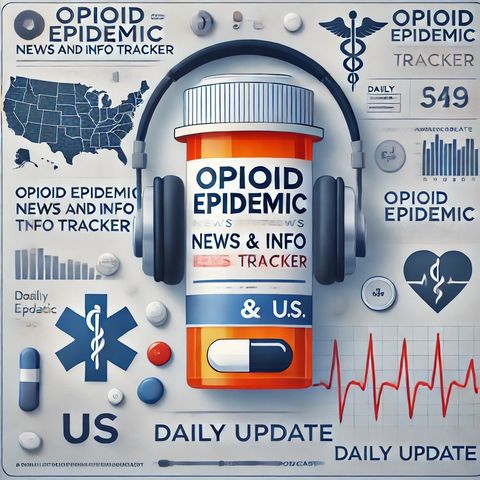Headline: Confronting the Relentless Opioid Epidemic: A Public Health Emergency

Download and listen anywhere
Download your favorite episodes and enjoy them, wherever you are! Sign up or log in now to access offline listening.
Headline: Confronting the Relentless Opioid Epidemic: A Public Health Emergency
This is an automatically generated transcript. Please note that complete accuracy is not guaranteed.
Description
## The Opioid Epidemic: A Persistent and Devastating Public Health Crisis The opioid epidemic continues to ravage communities across North America, marking one of the most severe public health crises...
show moreThe opioid epidemic continues to ravage communities across North America, marking one of the most severe public health crises of the 21st century. Here are some key facts and trends that highlight the scope and complexity of this issue.
### Rising Death Toll
Between 2016 and March 2024, Canada reported 47,162 apparent opioid toxicity deaths, with a significant concentration in British Columbia, Alberta, and Ontario, accounting for 84% of these deaths during the first quarter of 2024[1].
In the United States, the situation is equally dire. In 2022, nearly 108,000 people died from drug overdoses, with approximately 82,000 of those deaths involving opioids. This represents a staggering increase, with opioid overdose deaths being 10 times higher than in 1999[3].
### Demographic Impact
The opioid epidemic disproportionately affects certain demographics. In Canada, males account for 72% of accidental opioid toxicity deaths, and individuals aged 30 to 39 years are the most affected, making up 31% of these deaths[1].
Similarly, in the U.S., males are significantly more likely to die from opioid overdoses, with a 3.5 times higher rate compared to females in some regions. The age groups most affected are those between 25 and 44 years old[4].
### Types of Opioids Involved
The opioid epidemic has evolved through three distinct waves. The first wave, starting in the 1990s, was driven by increased prescribing of prescription opioids. The second wave, beginning in 2010, saw a rise in heroin-related overdose deaths. The current third wave, which started in 2013, is characterized by a surge in deaths involving synthetic opioids, particularly fentanyl and its analogues[3].
Fentanyl, which is 50 times more potent than heroin and 100 times more potent than morphine, has become a major contributor to opioid overdose deaths. In Canada, fentanyl and its analogues were involved in 33% of opioid-related poisoning hospitalizations in the first quarter of 2024[1].
### Co-Poisoning and Poly-Substance Use
The issue is further complicated by co-poisoning with other substances. In Canada, 17% of opioid-related poisoning hospitalizations involved co-poisoning with a stimulant, and 46% of
Information
| Author | QP-4 |
| Organization | William Corbin |
| Website | - |
| Tags |
Copyright 2024 - Spreaker Inc. an iHeartMedia Company

Comments